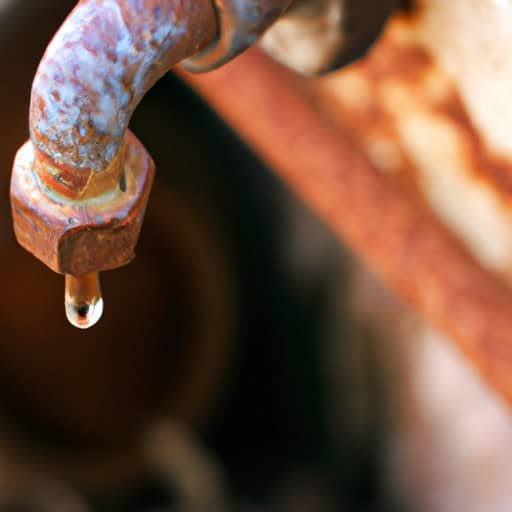Curious about the quality of your well water? Understanding the importance of testing for heavy metals and minerals is crucial for maintaining a safe and healthy water supply. In this article, we will explore why well water testing is vital, what heavy metals and minerals to look out for, the potential health risks they pose, and how you can ensure your water is free from these contaminants. From ensuring the well-being of your loved ones to taking proactive measures in preserving the environment, being informed about well water testing is a must for every responsible well owner.

Importance of Well Water Testing
Testing the quality of your well water is of utmost importance when it comes to ensuring the safety of your drinking water. While your well water may appear clean and clear, it can contain a variety of potential health risks that are not visible to the naked eye. By conducting regular tests, you can identify any contaminants present in your water and take necessary precautions to prevent long-term exposure.
Common Heavy Metals and Minerals in Well Water
Various heavy metals and minerals can be found in well water, some of which include arsenic, lead, mercury, cadmium, chromium, iron, manganese, calcium, magnesium, and potassium. These substances, even in trace amounts, can pose significant health risks if consumed over a prolonged period.
Health Effects of Heavy Metals and Minerals
Exposure to heavy metals and minerals in well water can result in both short-term and long-term health effects. Short-term effects may include gastrointestinal issues, nausea, and vomiting, while long-term exposure can lead to more serious health conditions such as kidney damage, liver damage, neurological disorders, and even certain types of cancer. Additionally, the risks of exposure to these contaminants can accumulate over time, making regular testing and monitoring crucial.
Potential Sources of Contamination
Contamination of well water can occur due to various factors, including natural geological formations, industrial activities, agricultural practices, domestic sewage, and runoff from landfills. Natural geological formations may contain certain minerals that can seep into the groundwater, while industrial activities and agricultural practices can introduce heavy metals and chemicals into the water supply. Domestic sewage and runoff from landfills can also contribute to contamination, especially if the well is located in close proximity to these sources.

Recommended Testing Frequencies and Standards
To ensure the safety of your well water, it is important to follow recommended testing frequencies and standards. The Environmental Protection Agency (EPA) provides guidelines on testing and has established maximum allowable levels for various contaminants in drinking water. Additionally, local health departments may have their own recommendations based on regional factors. It is also beneficial to consult with private well owner associations for further guidance on testing frequencies and standards specific to well water.
Testing Methods for Heavy Metals and Minerals
There are several testing methods available for determining the presence of heavy metals and minerals in well water. Lab-based testing is a common method that involves sending water samples to a certified laboratory for analysis. Field test kits are also available and can provide preliminary results, but may not be as accurate as lab-based testing. Some advanced testing techniques include Inductive Coupled Plasma-Mass Spectrometry (ICP-MS) and X-ray Fluorescence (XRF), which can detect a wide range of contaminants.

Sampling Techniques and Locations
Proper sampling techniques and locations are vital to obtaining accurate test results. It is recommended to follow specific sampling procedures outlined by testing laboratories or local health departments. Wellhead sampling, which involves collecting a water sample directly from the well, is crucial in assessing the quality of the source water. Downstream sampling, which involves collecting samples from faucets or other points of use, provides information on potential contamination during distribution. It is also important to consider sampling during different seasons, as contaminant levels may vary.
Interpreting Test Results
Interpreting test results is essential in understanding the quality of your well water. Acceptable limits for various contaminants are established by regulatory standards, such as those set by the EPA. Understanding the concentration levels of the detected substances in your water can help determine the severity of contamination. It is important to compare the test results with regulatory standards to assess if any action needs to be taken to address potential health risks.

Treating Heavy Metals and Mineral Contamination
If your well water tests positive for heavy metals or minerals, there are several treatment methods available. Water filtration systems, such as activated carbon filters, can effectively remove contaminants from your water. Distillation, ion exchange, and reverse osmosis are other common treatment options that can help eliminate these substances. The best treatment method depends on the specific contaminants present in your water, so consulting with water treatment professionals is recommended.
Maintaining Well Water Quality
To ensure ongoing well water quality, it is important to prioritize regular well maintenance. This includes inspecting the well for any signs of damage or deterioration, keeping the well cap securely in place, and regularly testing the water for contaminants. Upgrading well infrastructure, such as adding a well casing or sealing the well properly, can also help prevent contamination. Monitoring the water quality and re-testing periodically is crucial to detect any changes or new contaminants that may arise.
By understanding the importance of well water testing for heavy metals and minerals, you can take proactive measures to ensure the safety and quality of your drinking water. Regular testing, following recommended standards, and implementing appropriate treatment methods, if required, will go a long way in safeguarding your well water and protecting your health. Remember, prevention is key, and staying informed about the potential risks and sources of contamination is essential to maintaining the well-being of you and your loved ones.


